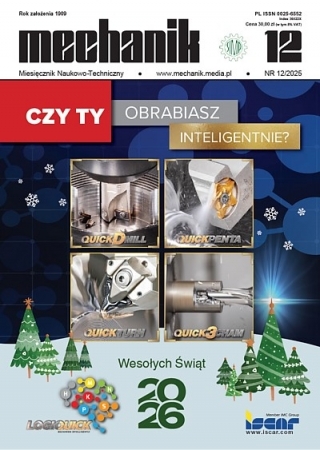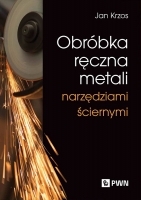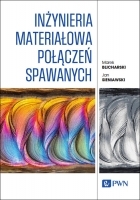Metody kształtowania materiałów ceramicznych*
Ceramics machining methods
Mechanik nr 02/2015 - Biuletyn Instytutu Zaawansowanych Technologii Wytwarzania
STRESZCZENIE: Przedstawiono wyniki badania właściwości fizycznych i mechanicznych ceramiki o osnowie z Al2O3, SiC, Si3N4 z dodatkami faz o dobrej przewodności elektrycznej oraz ceramiki o osnowie z TiB2. Określono gęstość, moduł Younga, twardość HV1 oraz przewodność elektryczną poszczególnych materiałów. Ceramiczne materiały kompozytowe z fazami przewodzącymi zostały wytworzone z zastosowaniem urządzenia do spiekania metodą SPS (Spark Plasma Sintering). Materiały odznaczające się dobrą przewodnością elektryczną kształtowano za pomocą obróbki elektroerozyjnej (EDM – Electro Discharge Machining). Powierzchnie materiałów po cięciu elektroerozyjnym poddano analizie z wykorzystaniem skaningowej mikroskopii elektronowej.
SŁOWA KLUCZOWE: materiały ceramiczne, spiekanie SPS, obróbka elektroerozyjna, EDM.
ABSTRACT: Presented in the paper are physical and mechanical properties of the Al2O3, SiC and Si3N4 matrix ceramics with good electrical conductivity phases added and of TiB2 matrix ceramics. Density, elastic modulus, hardness HV1 and electrical conductivity of each material were determined. Ceramic composite materials with conductive phases have been produced using SPS (Spark Plasma Sintering) method. Materials showing good electrical conductivity were shaped by means of EDM (Electro Discharge Machining) method. Material surfaces as left after EDM cutting were inspected by means of scanning electron microscopy.
KEYWORDS: ceramic materials, spark plasma sintering, electro discharge machining, EDM.
BIBLIOGRAFIA / BIBLIOGRAPHY:
- Pampuch R., Błazewicz S., Górny G. „Materiały ceramiczne dla elektroniki”. Kraków: Wydawnictwa AGH, 1993.
- Chen S.L., Hsu Q.C. “Studies on electric-discharge machining of non-contact seal face grooves”. Journal of Materials Processing Technology. No. 140 (2003).
- Tomlinson W.J., Jupe K.N. “Strength and microstructure of electrodischarge-machined titanium diboride”. Journal of Materials Science Letters. No. 12 (1993).
- Liu K., Peirs J., Ferraris E., Lauwers B., Reynaerts D. “Micro Electrical Discharge Machining of Si3N4-based Ceramic Composites”, http://www.4m-net.org/files/papers/4M2008/05-03/05-03.PDF
- Manoj Kumar B.V., Ramkumar J., Bikramjit Basu, Kang S. “Electrodischarge machining performance of TiCN-based cermets”. International Journal of Refractory Metals & Hard Materials. No. 25 (2007).
- Sanchez J.A., Cabanes I., Lopez de Lacalle L.N., Lamikiz A. “Development of Optimum Electrodischarge Machining Technology for Advanced Ceramics”. The Internation Journal of Advanced Manufacturing Technology. No. 18 (2001).
- Lauwers B., Liu W., Kruth J.P., Vleugels J., Jiang D., Van der Biest O. “Wire EDM machining of Si3N4, ZrO2 and Al2O3-based ceramics”. International Journal of Electrical Machining. No. 10 (January 2005).
- Lauwers B., Kruth J.P., Liu W., Eeraerts W., Schacht B., Bleys P. “Investigation of material removal mechanisms in EDM of composite ceramic materials”. Journal of Materials Processing Technology. No. 149 (2004).
- Yan-Cherng Lin, A-Cheng Wang, Der-An Wang, Chih-Cherng Chen. “Machining Performance and Optimizing Machining Parameters of Al2O3–TiC Ceramics Using EDM Based on the Taguchi Method”. Materials and Manufacturing Processes. No. 24 (2009).
- Hussain S., Barbariol I., Roitti S., Sbaizero O. “Electrical conductivity of an insulator matrix (alumina) and conductor particle (molybdenum) composites”. Journal of the European Ceramic Society. Vol. 23, Iss. 2 (February 2003).
- Shuichi Kawano, Junichi Takahashi, Shiro Shimada “Highly electroconductive TiN/Si3N4 composite ceramics fabricated by spark plasma sintering of Si3N4 particles with a nano-sized TiN coating”. Journal of Materials Chemistry. No. 12 (2002).
- Oczoś K.E. „Kształtowanie ceramicznych materiałów technicznych”. Rzeszów: Oficyna Wydawnicza Politechniki Rzeszowskiej, 1996.
- Chien-Cheng Liu, Jow-Lay Huang. “Effect of the electrical discharge machining on strength and reliability of TiN/Si3N4 composites”. Ceramics International. Vol. 29, Iss. 6 (2003).





















